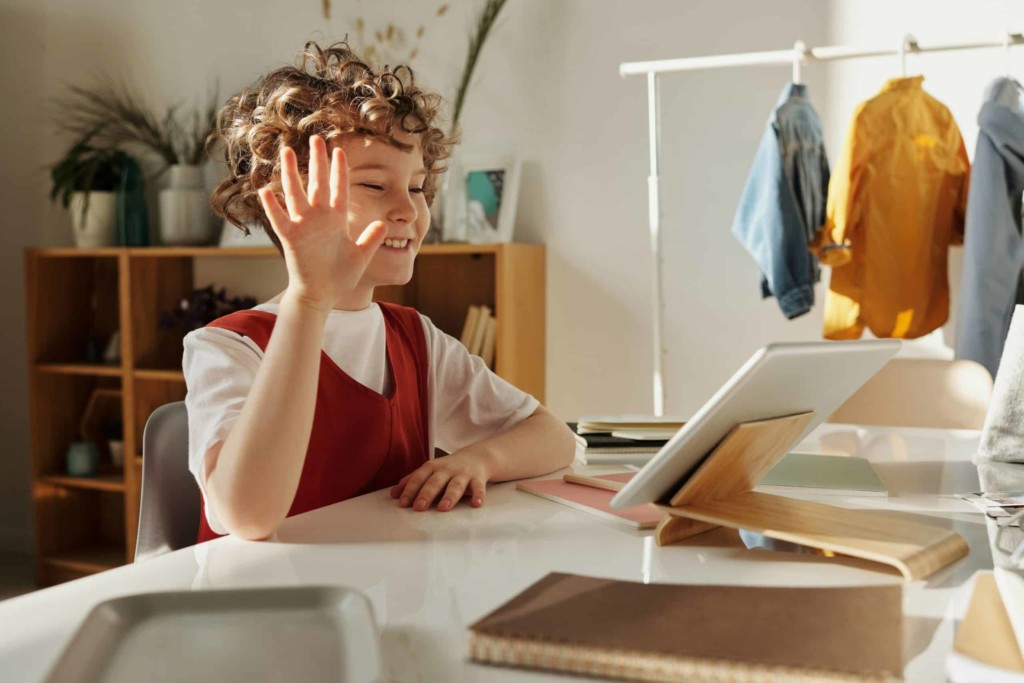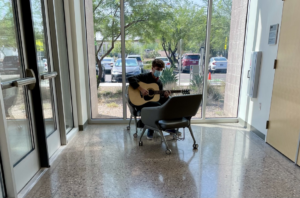Strategies for Fostering a Productive Distance Learning Experience

The best classroom learning is rooted in positive relationships and dynamic interactions among students and with the teacher. It includes thoughtfully planned and engaging learning experiences. It fosters ongoing learning and growth and intentionally promotes independence in students. The schedule of the school day is a carefully orchestrated cadence that includes moments of deep thinking bookended with mind and body breaks that bolster the focus required for learning. And this experience provides all students with personalized support that ensures equitable access to learning. Though educators, parents, and students all yearn for a safe return to in-person schooling, when that is not possible, distance learning can model these best practices that educators know are integral to productive learning and growth.
Communicate Expectations: Starting a school year in a virtual learning environment is new for teachers, students, and families. Things that do not usually require communication in a typical school year now do. It is important to communicate regularly, through multiple modalities, and especially if a schedule or protocol changes.
- Create comprehensive schedules for students; do not rely on families to piece together emails and calendars from multiple sources. And if something changes, make sure that families can easily identify the most up-to-date information.
- Anticipate challenges that students and families might encounter and communicate preventative measures. You might share that students should have their devices fully charged before a long day of videoconferencing or give parents a heads-up if a new activity or assessment might feel particularly draining or challenging or require additional time.
When communicating with students and families, be very clear about the expectations around work completion and submission. Be clear to share which work students must complete, which work must be submitted and how, and which assignments are optional.
Build Community: No matter the learning modality, developing a classroom community and building relationships are foundational for learning. Virtual instruction can feel overwhelming and isolating especially for our youngest learners. Find ways to help students feel connected to the teacher, one another, and the broader learning community.
- During virtual instruction, be sure to regularly say students’ names. Children feel included when they hear their own names and they feel connected to others when they learn their names.
- Use a balance of gallery view, shared screen, and speaker view. While speaker view and shared screens are useful for direct instruction, you might encourage students to use a gallery view at times for students to get to know their classmates.
- As students are getting used to the virtual environment, it is important that they have a choice to verbally share. As a way to increase comfort and expand inclusion, you might invite students to participate by using chat functions, holding up a yes or no sign, or responding on a whiteboard.
Show Visuals: In classrooms, pictures and visuals are a cornerstone for independence. The same is true in a virtual environment. Remember to incorporate visuals during learning as much as possible.
- Use visuals to help students know when to mute and unmute their microphones. Having visuals for routines helps to limit the verbal reminders on a videoconference, leaving more space and attention for learning.
- Write or draw instructions for students as you share them verbally. Not all students are strong auditory learners and having a visual to reference for directions can be very helpful.
- Share models of completed work during a videoconference or posted within a learning management system. This helps students and their caregivers understand what is expected during independent work time.
- Provide anchor charts for students’ home learning spaces. You might have them available at a supply pick-up or email copies to families. Younger students benefit from anchor charts of letters and numbers, and all students benefit from anchor charts that are directly connected to the content they are learning, whether it be the solar system, 3D shapes, or math concepts. You might even color code the anchor charts with a sticker so that you can quickly reference various visuals.
Include Hands-On Resources: Students learn best when they engage in active, hands-on learning. Though the migration to virtual learning makes facilitating these experiences more challenging, these tangible materials bring an additional dimension to the digital learning space. By planning ahead and thinking creatively, educators can replicate some of these hands-on experiences for students.
- If your school offers opportunities to pick up supplies for students, include math manipulatives (i.e., blocks, dice, spinners, etc.) and whiteboards that students can use in a variety of ways during virtual learning. If there is not a supply pick-up option, invite students to use crayons or coins to count, make arrays, or otherwise show their work.
- Plan lessons that include real-life items that students have in or around their homes. You might have students bring something from their homes to measure as you teach them how to measure with a ruler. You might have students search for living and nonliving things in and around their house for a science lesson.
- As you plan lessons, be sure to account for different learning styles and preferences. Consider building in multiple options for students to show their work including writing, drawing, building, or recording a video. Offering multiple ways to respond can provide important pathways for students who are reluctant to participate.
- Find ways to get books in the hands of students. Schools cannot rely on families’ home libraries to support and sustain reading throughout an entire year, especially for early readers. Think creatively about partnering with community libraries or sending home leveled readers from the school to provide students with greater access to books.
Structure Breaks: Students of all ages need breaks within their day. Most virtual classrooms have scheduled breaks, but how students utilize these breaks can set them up for success or quickly turn them off-task. It’s important to work with families to add some structure to this time.
- Recognize the need for breaks even while on a videoconference. You might ask students to stretch, dance, or stand for a particular activity to break things up. Just as students would have movement breaks in the classroom when lining up or moving from the carpet to desks, give students a chance to change positions, and move their bodies.
- For breaks between videoconferences, be clear about what time students should return. Encourage them to write down the time and set a timer, on their device or otherwise, whenever possible. Executive functioning is a set of essential skills that kids work to build throughout elementary school. Be sure to pause and explicitly teach these skills as many students are still learning these important routines and behaviors.
- Before students leave the videoconference for a scheduled break, you might do a quick brainstorm with students about how to best utilize breaks. Remind them to use the bathroom, eat a snack, or move their bodies. You might even share some tools with parents, such as Go Noodle or Cosmic Kids Yoga, to structure movement during breaks.
Offer Support: It can be challenging to know which students are struggling during videoconferencing—either with the academic content or comfort with the new modality. Find ways to check in with students, offer focused support, and build confidence and connections.
- If students have independent work to do after a videoconference, start the assignment a few minutes before signing off. This gives students a chance to ask questions as they get started.
- Use videoconferencing break out rooms and take turns checking in on the groups. It is much easier to see who needs additional support in a small group dynamic.
- Partner with families to better understand how students are doing. Unlike typical years, teachers cannot possibly see all of the frustrations and struggles or celebrations and growth among their students. Ask parents and caregivers for regular feedback, and be sure that they know their feedback is welcome and appreciated.
Be sure to include social-emotional check-ins throughout learning. You might use different lessons or events to talk about feelings as a class and provide a relevant vocabulary to describe different emotions. You might also create opportunities for students to share how they are feeling via quick, visual check-ins, surveys, or emails.
Engaging, Productive, and Meaningful Distance Learning
As schools and districts across the nation are working to engage students in virtual learning, many are proving that through hard work, preparation, and creative thinking, educators can ensure that all of our students have a year filled with learning, growth, and development. In the spring, given the abrupt transition to distance learning, longer-term planning and preparation was not possible.
Throughout this school year, we can be much more thoughtful and intentional about the distance learning experience. We can communicate with students and families about both short-term plans and long-term goals. We can provide engaging experiences and personalized pathways to learning for all students. We can create productive two-way channels with students and families for communication and support that can expand the reach and impact of the learning. And we can work to ensure that this year’s distance learning experience is rigorous, relevant, and has strong relationships at the core.
For more, see:
- ACT’s Next Act: Mosaic
- The Role of Student Roles
- Leaders Are Not the Chief Decider, They Are Decision Architects
Stay in-the-know with innovations in learning by signing up for the weekly Smart Update.







0 Comments
Leave a Comment
Your email address will not be published. All fields are required.